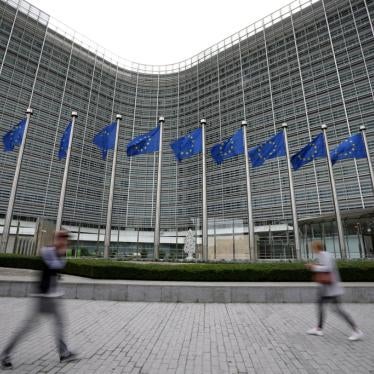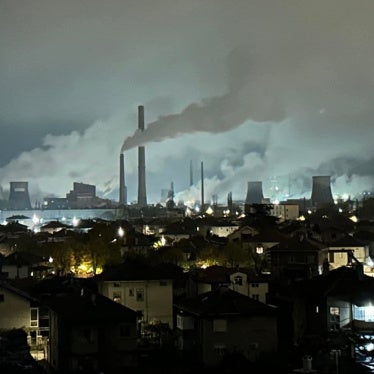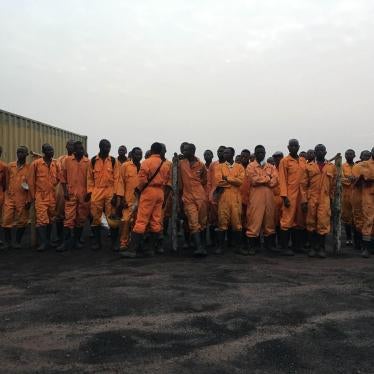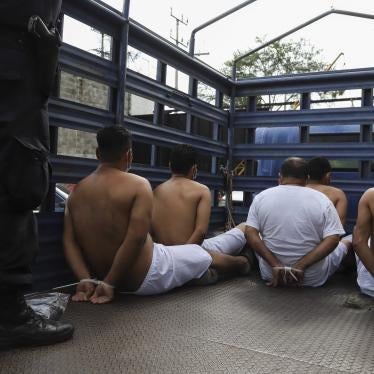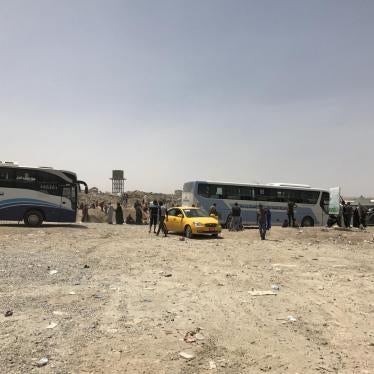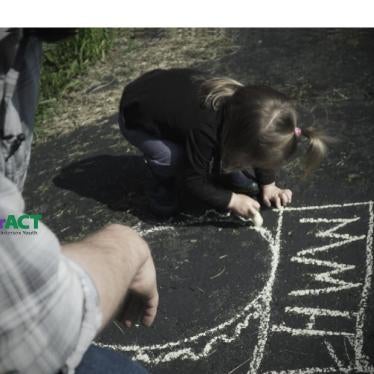The European Union’s forced labor regulation (FLR) is new legislation that prohibits products made with forced labor[1] from being sold in the EU market. The FLR entered into force on December 14, 2024, but will only be fully in effect from December 14, 2027, giving companies three years to prepare to comply before the law starts to impact directly their approach to human rights, their sourcing strategies, and their products.
Freedom from forced labor is a human right. According to the International Labour Organization (ILO)’s April 2024 report on the economics of forced labor, profits from forced labor made by companies as part of their supply chains amounts to €55.7 billion (US$63.9 billion) on an annual basis. A 2022 ILO Global Estimates report documented that 17.3 million people are victims of forced labor exploitation worldwide in the private sector,[2] which the ILO defines as “forced labor in the private economy imposed by private individuals, groups, or companies in any branch of economic activity with the exception of commercial sexual exploitation.” Of these 17.3 million, 6 million are women and girls, and another 3.9 million people, including 848,000 women and girls, are victims of state-imposed forced labor (SIFL).[3] State-imposed forced labor occurs when national or local authorities force citizens to work, where people have not offered themselves voluntarily.
The FLR creates a renewed opportunity to coordinate actions among all EU member states to fight forced labor in the EU internal market. The risk of sanctions for non-compliance is expected to have a deterrence effect and hopefully incentivize companies to conduct smarter due diligence to identify forced labor risks in their operations and supply chains.
This question-and-answer document provides companies but also regulators, trade unions, and investors more details on the forced labor regulation and outlines some high-level steps as starting points for due diligence that companies should take to help address forced labor risks and harm in their supply chains.[4]
How will the EU and member states prevent products made with forced labor from being sold on the EU market?
The EU Regulation requires the European Commission and EU governments to prevent any product tainted with forced labor from being sold in the EU market or, if they were made inside the EU, exported to be sold elsewhere. Products that regulators have identified as being made, in part or wholly, by forced labor (“sanctioned products”) and already on the EU market, will be taken off the shelves and disposed of by member states’ authorities. National customs authorities will be required to seize and dispose of any sanctioned product if companies attempt to bring the product into the EU or to export it outside the EU. The law also requires national regulators and the European Commission to publish a list of “sanctioned products” that have been excluded from the EU market because of their links to forced labor.
With such robust measures, the FLR should incentivize companies to actively address the risk of forced labor in their supply chains. The regulation will push companies to prevent, address and remedy cases of forced labor in their operations and supply chains before they are targeted for investigation by regulators at the European Commission or member states.
Does this law apply to goods produced in Western or high-income countries, too?
The EU Regulation applies to all goods produced in conditions of forced labor, regardless of their origin. The law’s prohibition focuses exclusively on whether the goods concerned have been produced in whole or in part under conditions of forced labor. The FLR therefore requires all businesses, irrespective of size, turnover, and location, that produce in or for the EU to eliminate forced labor in their operations and supply chains.
How will the FLR be enforced?
The EU Regulation will be enforced by various entities depending on where the forced labor occurs:
- If forced labor occurs within the EU, regulators in the member state where the forced labor occurred will be required to investigate, decide on a sanction, and follow through on the enforcement of the law in its own territory. The law requires member states to set up or identify their own agencies (known in the regulation as “competent authorities”) to oversee enforcement of the FLR no later than December 2025, one year after the FLR’s entry into force. [5]
- If forced labor occurs outside the EU, a European Commission team, yet to be set up, will lead all investigations and determine whether products are linked to forced labor. However, if a product is sanctioned,[6] then the Commission will rely on governments in member states to remove the product from the shelves.
Customs authorities and market surveillance authorities in member states will play a crucial role in preventing sanctioned products from being sold on, imported in, or exported from the EU market.
Coordination between the European Commission and member states, and between member states’ governments and customs authorities, will be key to effective implementation of the law and will be facilitated by the creation of an ad-hoc “Union Network.” [7]
What is state-imposed forced labor and how will the FLR tackle it?
State-Imposed Forced Labor (SIFL) means government-imposed forced labor as punishment for the expression of political views, for the purposes of economic development, as a means of labor discipline, as punishment for participation in strikes or as a means of racial, religious, or other discrimination.
In 2025 alone, studies found SIFL in more than 17 industries in the Xinjiang Uyghur Autonomous Region in China, in the cotton fields of Turkmenistan, and in North Korea. Highly repressive political environments that impede workers’ ability to choose their occupation freely and crush opposition of any kind are a common feature in countries where SIFL is documented.
The EU Regulation foresees the creation in the Commission’s forced labor risks database of a list of high-risk areas, sectors, and products where state-imposed forced labor occurs. These mentions will be critical at the pre-investigation stage to assess the severity of the case, as part of the risk-based approach.
How will the EU and member states investigate forced labor?
The FLR’s investigations into products will be both active and reactive. Reactive investigations are initiated by credible submissions of evidence by third parties such as civil society groups, individuals, whistleblowers, or workers’ representatives. Active investigations occur because the European Commission and regulators in member states are given the authority to initiate their own investigations based on credible information in a new forced labor database[8] or found independently.
The authorities will implement a risk-based approach to determine which products and companies to target for investigations, assessing the likelihood of forced labor linked to a specific product or company. [9]
Regulators will consider the following criteria in determining how to prioritize investigations:
- Scale and severity of the suspected forced labor, including whether state-imposed forced labor (SIFL) could be a concern;
- Quantity or volume of products placed or made available on the EU market; and
- Share of the part suspected to have been made with forced labor in the final product (i.e., the proportion of the product or its components that have been made with forced labor).
Unlike the US 2021 Uyghur Forced Labor Prevention Act, the EU FLR does not create a rebuttable presumption of forced labor for goods from regions with SIFL. Instead, the regulation grants the authority to the European Commission, during the preliminary investigation process and in case companies or third countries are uncooperative, to establish that “forced labor has been used on the basis of any other facts […] including when a risk of forced labor imposed by state authorities is identified” (art.20.2). Along with the ability to start investigations, the Commission should then be able to address SIFL cases in a meaningful manner.
The key stages of the investigation are described in the graphic[10] below:
As a result of the investigation, goods recognized as made with forced labor, in whole or in part, will be sanctioned. Once sanctioned, details of products excluded from the EU market will be publicly accessible through a dedicated page within a forced labor single portal, yet to be set up.
Companies whose products have been sanctioned can ask for a review of the decision.[11]
What will the FLR require companies to do practically to address the risk of forced labor in their supply chains?
Human Rights Watch and GLI believe that forced labor can only be tackled meaningfully by addressing the working conditions of victims and, in essence, the root causes of exploitation. This may require in-depth investigations of labor practices in supply chains that include the impact that socio-economic and cultural factors may have on the labor conditions locally, such as religion, race, ethnicity, or caste discrimination as well as the impact of other laws (such as draconian information technology legislation) on the rights to freedom of expression, association, or collective bargaining.
Companies that invest in meaningful due diligence are thus more likely to avoid involvement or complicity in forced labor. However, the FLR does not impose new due diligence obligations on companies and only refers to existing voluntary standards in the United Nations Guiding Principles on Business and Human Rights (UN Guiding Principles) and Organization for Economic Cooperation and Development (OECD) Guidelines and guidance or obligations such as those established by other EU laws, such as the Corporate Sustainability Due Diligence Directive (CSDDD).
While the CSDDD requires companies to set up a due diligence process, the FLR will sanction any evidence of forced labor found in the manufacturing process of investigated products.
To gear up for the enforcement phase of the FLR (from December 2027 on), companies need to start implementing meaningful due diligence efforts over their supply chains as soon as possible, to limit their risks of exposure to forced labor.
The first step is for companies to effectively map their operations and supply chains all the way upstream. Mapping should be followed by an effort to identify forced labor risks in their supply chain. Companies should prioritize their due diligence efforts where the forced labor risks are most severe. They should analyze risk by consulting stakeholders, especially local civil society organizations, community representatives and independent unions representing all categories of workers and vulnerable and marginalized groups depending on the cultural and socio-economic context.
Existing cases of forced labor identified during this mapping or through any other means should be addressed and remedied as soon as possible as recommended by the UN Guiding Principles, the OECD, and the CSDDD.
Once the risks have been identified and prioritized, companies should meaningfully engage with the direct and indirect suppliers most at risk of forced labor, at whichever tier of the supply chain they may be located. Companies should collect information on the supplier’s workforce characteristics (gender, nationality or origin, migrant status, age, vulnerable and marginalized groups, etc. depending on context) and on actual working conditions on the ground (versus theoretical, as described in codes of conduct or in company rules and policies). This will allow them to assess their supplier’s alignment with international standards of decent work, including whether workers are earning a living wage.
Companies may need to collaborate with their suppliers and take an active role in training and supporting them to fully understand and implement efficient measures to prevent forced labor in their operations as well as to provide them with appropriate tools, systems, and financial support.
The UN Guiding Principles, the OECD guidance, as well as the CSDDD, also require buyers to evaluate their own responsibility in potentially incentivizing forced labor through their purchasing and pricing practices, as well as to set up effective grievance mechanisms[12] accessible to all workers and suppliers.
Beyond suppliers, companies should directly engage with other local stakeholders, including worker representatives, independent trade unions, communities, vulnerable and marginalized groups, and civil society groups, to facilitate and enrich the identification of existing or potential forced labor risks that cannot be identified through traditional auditing or certification processes. Such engagement may also facilitate the identification of other labor exploitation in their supply chain and help to address the continuum of labor exploitation that workers often experience.
How does the pre-investigation phase incentivize companies to conduct due diligence over forced labor risks?
Appropriate due diligence is key as the FLR foresees that companies under investigation will be asked, at the preliminary investigation level, to provide evidence of all the appropriate due diligence efforts they are making in relation to the forced labor situation being investigated.[13]
This pre-investigation stage is designed to give companies an opportunity to respond and provide whatever evidence they have that can demonstrate to regulators that they have meaningfully and swiftly put an end to forced labor cases, including by providing remedies to affected workers. Lawmakers have created this opportunity to allow companies some level of “defense” that could prevent the investigation from moving forward and thus possibly avoid a potential sanction for non-compliance.
Although companies still can provide additional evidence in the later stages of the investigation process, the investigation will not be stopped and will need to be completed.
The pre-investigation thus offers companies a unique and powerful incentive to prevent potential sanctions under the FLR by demonstrating that they have taken meaningful preventive and corrective action, including remediation and guarantees that the problem would not recur.[14]
Can a company ask regulators to remove sanctions on a product and does that require remediation?
If a regulator imposes a sanction on a company’s product, the company can ask for a review[15] that would lead regulators to lift this sanction on upcoming goods. To do so, the company will need to provide evidence that it has “lifted” (i.e., removed) the indicators[16] of forced labor for the product.
The measures a company would need to take to ensure forced labor indicators are no longer present would depend on the facts and circumstances in each case, which all parties involved should interpret in line with international standards defined by the UN Guiding Principles and other relevant OECD Guidance, as well as by local laws governing the case.
To address indicators of forced labor, companies will in some cases need to provide some level of remediation to workers, the nature of which should be determined in consultation with affected workers and their representatives.
For example, in one of the most common forms of forced labor—debt-bondage of migrant workers—initial debts arise from the payment of recruitment fees by the workers themselves. In such a situation of forced labor, the promise of a high salary rarely materializes. Therefore, lifting the indicator of debt bondage would require companies to ensure that, at a minimum, the initial debt must be reimbursed, with financial compensation acting as a partial remedy for the violations suffered by the victim.
It is important to note that, if a forced labor case occurs inside the EU, other complementary EU laws such as the CSDDD, the Anti-Trafficking Directive or the Victims Directive can apply (depending on the specifics of each case) that could require fuller remediation and/or compensation to be provided to victims.
Companies can minimize risks of non-compliance with the FLR by addressing forced labor in full alignment with international standards, including by providing full remedies to victims of forced labor in their supply chains.
To avoid companies disengaging from suppliers in ways that further prejudice workers, the FLR clarifies that changing the supplier is not considered evidence of addressing forced labor in a way that would merit removal of sanctions on a product.[17]
By June 2026, the European Commission will publish guidelines on remediation for companies as part of the FLR. The Forced Labor Union Network will also gather data on remediation linked to sanctions. When the effectiveness of the regulation is reviewed, after five years, the European Commission will evaluate if remedy mechanisms need to become part of the FLR.
What is the “forced labor risk database”?
The FLR requires the European Commission to establish a public database that will contain information on geographic areas, groups of products, and sectors at risk of forced labor.[18] The database will provide companies, as well as civil society, trade unions and consumers, information about the location and nature of forced labor risks. It will also guide and inform the Commission and member states’ competent authorities on where to prioritize their approach to the regulation’s enforcement.
The Commission will develop the database with evidence from international organizations such as the ILO and academic and research institutions. The law does not reference civil society groups as an explicit source of information, but experience from the US Department of Labor’s list of goods made with forced labor and child labor shows that civil society reports constitute a credible and often primordial source of information. Ignoring civil society sources would risk undercutting the pertinence and reliability of the database.
What are the key challenges of the FLR?
A key challenge is that the regulation excludes services provided with forced labor and thus could leave unsanctioned forced labor in sectors such as construction, transport, or hospitality,[19] where there are also significant forced labor risks.
For the successful future implementation of the FLR, it would be crucial in the upcoming review process to mainstream a worker-centered approach — such as by incorporating a remedy mechanism into the regulation. The main challenge lies in ensuring long-term protection of workers’ rights, as the FLR is primarily a product-based instrument. To be effective, the law needs to encourage companies to reform their supply chains in ways that genuinely safeguard workers on the ground.
Finally, the FLR only requires regulators to ban individual products but does not explicitly provide for bans against all products from entire regions where forced labor is pervasive, or against groups of products produced in situations of SIFL. Regulators will need to investigate each product individually, even if the products come from an entity already sanctioned or from a region listed in the database as being at high risk of SIFL. As a result, it will be challenging for regulators to efficiently address forced labor at scale.
It is also vital for EU regulators and member states to coordinate enforcement with other countries, such as the United States, to avoid potential discrepancies in enforcement, both inside the EU and in relation to external countries.
[1] For the definition of indicators of forced labor, see: ILO Helpdesk: Questions and answers on business and forced labor | International Labor Organization, accessed 31/03/2025.
[2] See table 1 of ILO Global Estimates referring to privately imposed forced labor excluding forced commercial sexual exploitation, i.e., privately imposed forced labor for the purpose of forced labor exploitation as defined in panel 1 of the publication.
[3] See Section 9 on what constitute state-imposed forced labor.
[4] The precise contours of what constitutes appropriate due diligence in a particular situation depends on the facts and circumstances of the case, including the resources of the company, and is beyond the scope of this Q&A.
[5] On the roles and functions of competent authorities inside the EU, please see the policy paper prepared by a coalition of nongovernmental organizations, including Human Rights Watch: https://www.antislavery.org/reports/recommendations-for-the-designation-of-national-competent-authorities-under-the-eu-forced-labour-product-ban-regulation/.
[6] See section 4.
[7] See article 6.
[8] See section 8.
[9] See EU FLR, article 14.
[11] See section 7.
[12] UNGP Principle 31 details that these grievance mechanisms must be legitimate, available, accessible, predictable, equitable, transparent, and safe as well as a source of continuous learning and based on engagement and dialogue with stakeholders.
[13] See article 17.1.
[14] “Authorities are instructed not to pursue an investigation if, based on the information available, including due diligence evidence submitted by companies, they determine that no substantiated concern of forced labor exists or that the original concerns have been addressed through due diligence measures” (art. 17.5).
[15] See article 21.
[16] See Eradicating forced labor: What works in practice - ILO Global Business Network on Forced Labor, accessed 04/16/2025.
[17] Preamble 48 stipulates that “Changing a supply chain, in the sense of relying on different suppliers, cannot be considered as a method of eliminating forced labor regarding the product concerned by that decision, since it would result in a different product.”
[18] Recital 31 explicitly states that the database will also include a list of high-risk regions, products, and product categories concerned with State-Imposed Forced Labor.
[19] See Global Estimates of Modern Slavery (https://www.ilo.org/sites/default/files/wcmsp5/groups/public/@ed_norm/@ipec/documents/publication/wcms_854733.pdf ) page 30, accessed 03/19/25.

